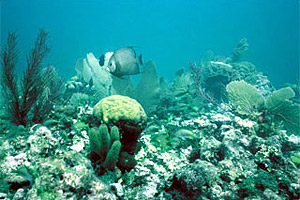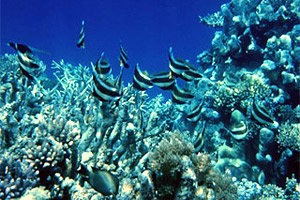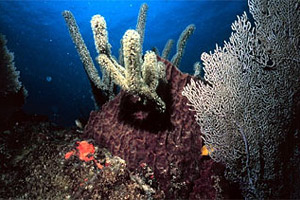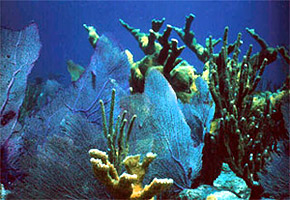Coral reefs occur along coastlines in tropical and subtropical regions wherever environmental conditions are suitable for their development.
Factors influencing reef development include:
- Light
- Temperature
- Sedimentation
- Salinity
Light
- Light levels are critical in maintaining the coral-algal symbiotic association

Light is critical in maintaining the symbiotic association between corals and symbiotic algae (zooxanthellae). The intensity of light greatly affects photosynthetic rates of the zooxanthellae, indirectly impacting coral growth and survival. Abundance of corals decreases rapidly with depth due to reduced light levels. In clear tropical waters, corals may live as deep as 150 feet (48 m), with very limited species found beyond that depth.
Temperature
- Optimal temperature for coral growth is 73-77°F (23-25°C)

Seawater temperatures can be tolerated between 61-95°F (16-35°C), with optimal coral growth occurring at temperatures of 73-77°F (23-25°C). These temperatures exist throughout most of the tropics with the exception of cool water currents off the west coasts of Africa and Australia. However, where currents move warm water from the tropics towards the north, reefs can survive in subtropical regions as near Bermuda.
Sedimentation
- Excessive sedimentation reduces available light for coral growth

Reefs can only develop in areas lacking nearby rivers that bring silt and freshwater into marine environments. Excessive sedimentation reduces available light, inhibiting photosynthesis by the symbiotic algae. Silt also settles on the coral surface, blocking feeding and respiration.
Salinity
- Corals require salinities between 30 and 40 parts per thousand

The amount of dissolved salts in the water is referred to as salinity and is measured in parts per thousand (ppt). Corals can tolerate a narrow range of salinities, between 30 and 40 ppt.
Glossary terms on page
- photosynthesis: process of making chemical compounds using light for energy, plants get their energy from photosynthesis by using chlorophyll converted with carbon dioxide and water to produce carbohydrates and release oxygen.
- subtropical: area on the surface of the earth between tropic and temperate regions, approximately between 40 degrees N. and S.
- salinity: concentration of total salts dissolved in water, usually measured in parts per thousand.